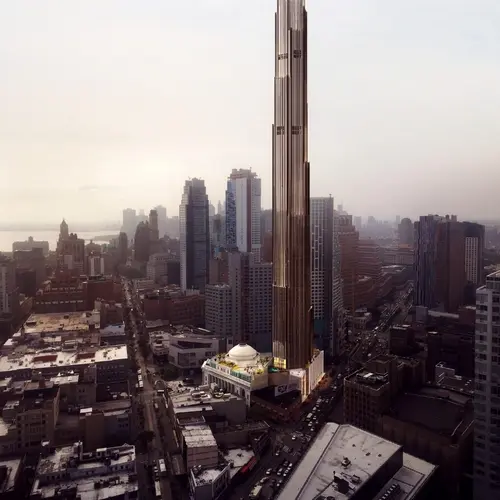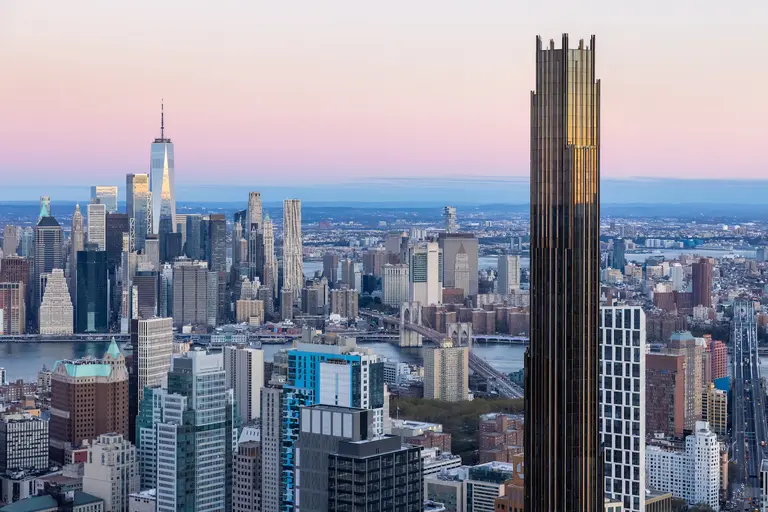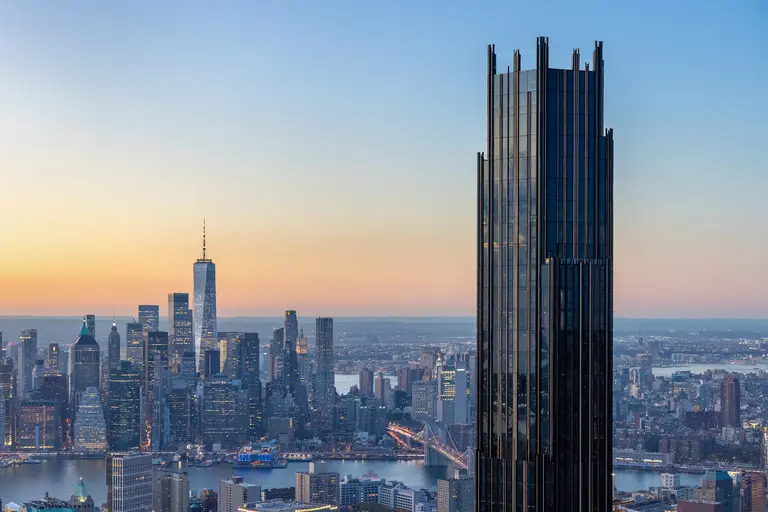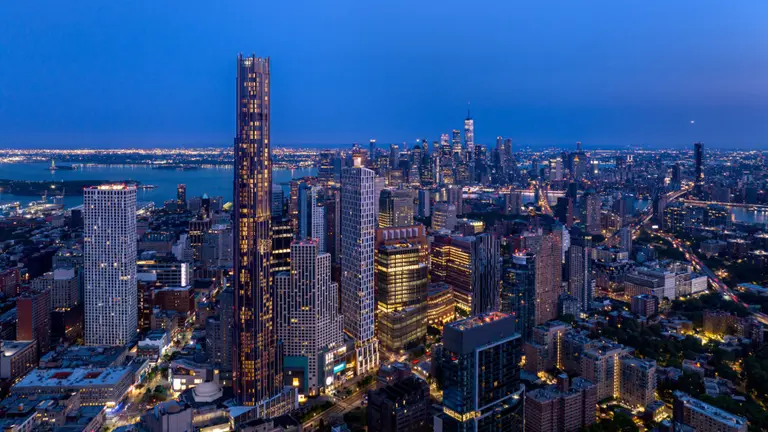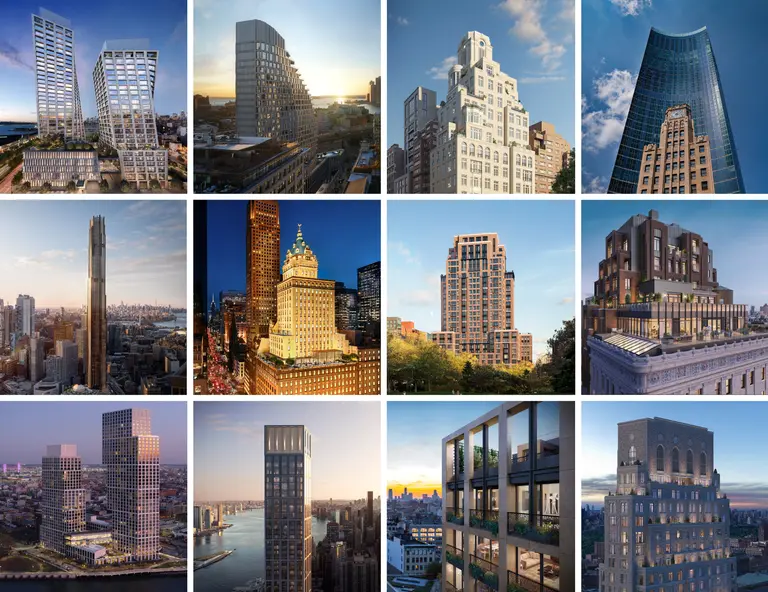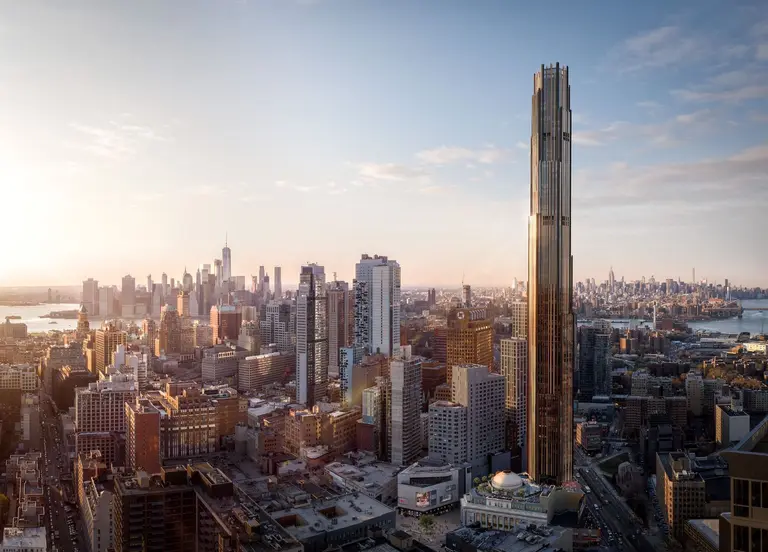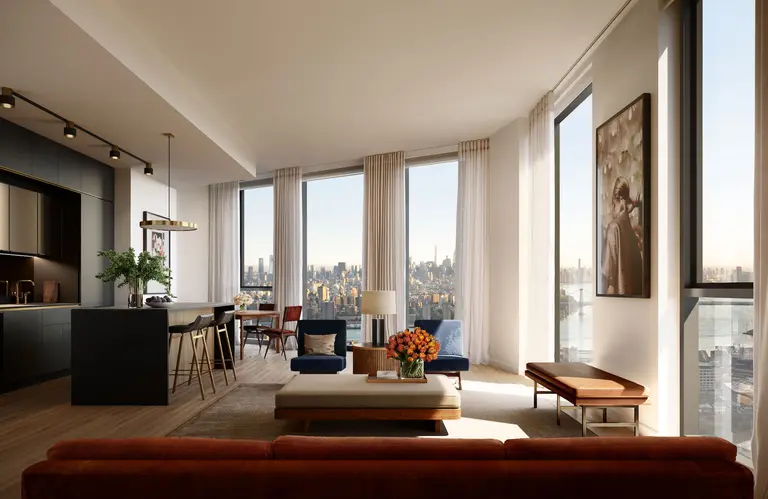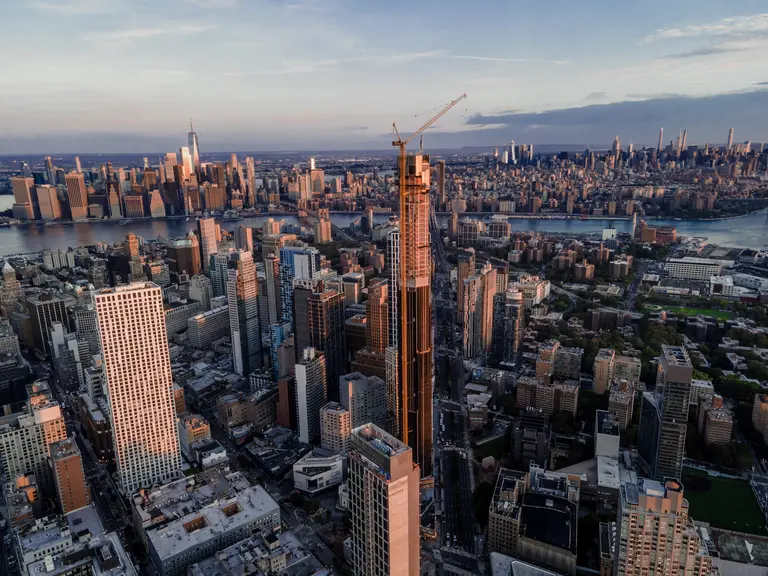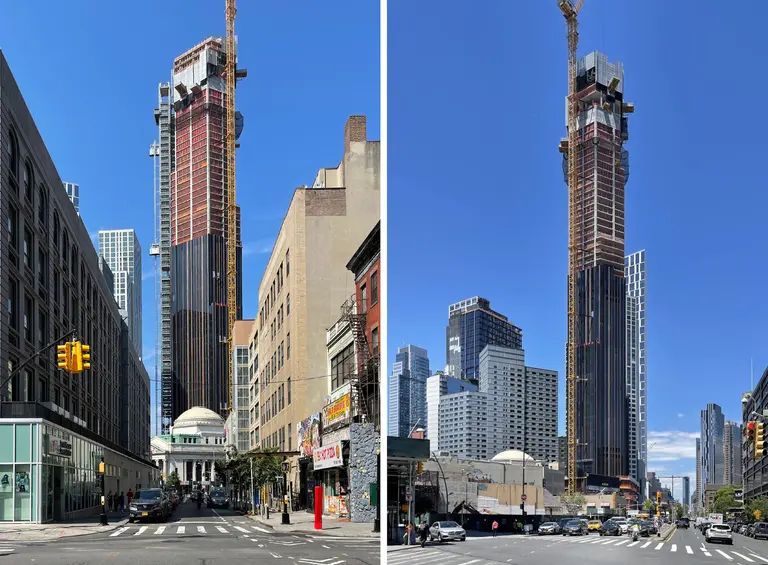At 9 DeKalb, SHoP Architects reveal a rooftop pool wrapping around Dime Savings Bank’s dome

Rendering via SHoP Architects
A fresh rendering of 9 Dekalb Avenue first published in the New York Times last week revealed a new aspect of the project: the Dime Savings Bank‘s roof will be transformed into an outdoor lounge for residents, including a pool that will partly wrap around the ornate Guastavino dome. Inside, the Beaux-Arts interior will become a flagship store, with further details to be announced. The rising 1,066-foot-tower is being developed by JDS Development, with SHoP Architects leading the design, and is set to become the tallest tower in Brooklyn upon completion.
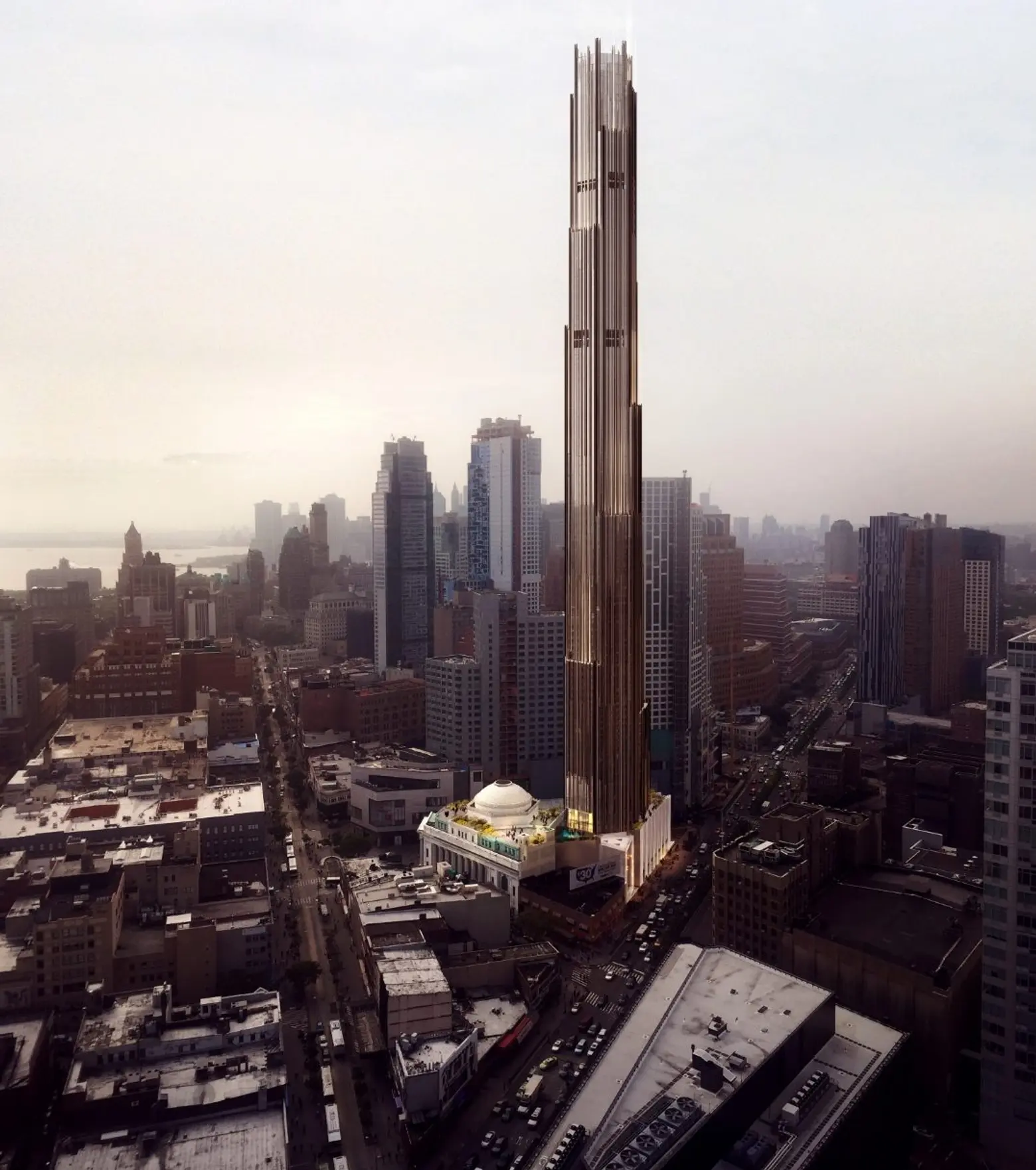
Rendering via SHoP Architects; JDS Development
The 73-story-tower will be clad in glass and bronze and will house roughly 425 rentals and 150 condo apartments, with retail on the ground floor. It features an interlocking hexagonal design which will be attached on one side with the marble and pink granite facade of the historic Dime Savings Bank. JDS bought the bank and its air rights for $95 million in 2016 and were able to transfer an additional 385,000 square feet, or 30 floors, of development rights to 9 Dekalb Avenue. In exchange, JDS agreed to restore the bank inside and out.
The Dime Savings Bank of Brooklyn was founded in 1859 in a post office on Montague Street, Brooklyn. In 1908 the bank moved into a new building at 9 DeKalb designed by Mowbray & Uffinger. The bank was modified and enlarged during the Great Depression by Halsey, McCormack & Helmer, becoming a 16,750-square-foot, 40-foot-tall landmark. The interior of the bank is decorated with seven types of marble, ancient Greek and Roman elements, and bronze gates, and was landmarked in 1994. The Landmarks Preservation Commission approved the planned changes proposed SHoP and JDS in May 2016. Commissioner Frederick Bland has called the project “exhilarating” and an example of “enlightened urbanism at its best.”
As the New York Times pointed out, this is one of several developments across the city that are repurposing historic bank buildings. “The issue is really analogous to churches — opulent spaces that were built for what was then a very widespread need,” said William Higgins of Higgins Quasebarth & Partners, a preservation firm that has consulted on several bank conversions. “That need recedes, and what’s left on the shore are these spectacular buildings that have lost their purpose.”
[Via New York Times]
RELATED:

